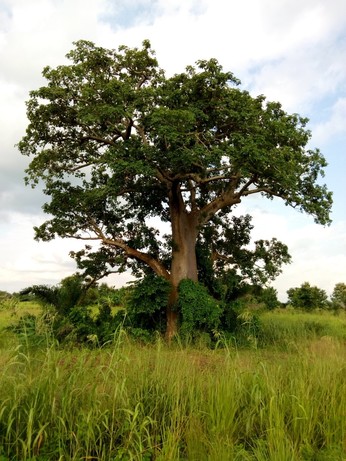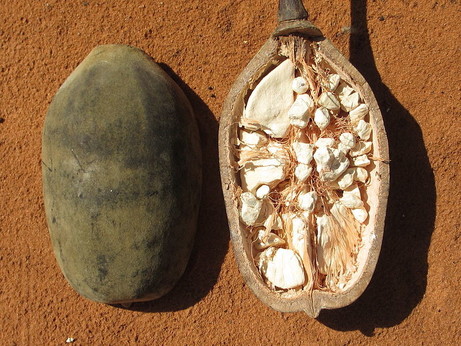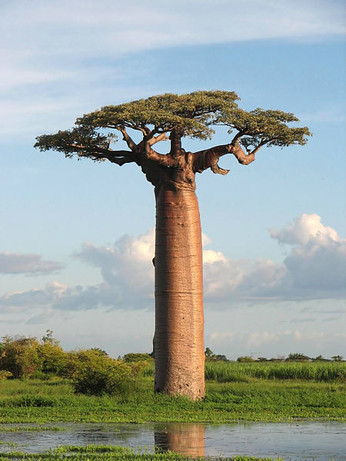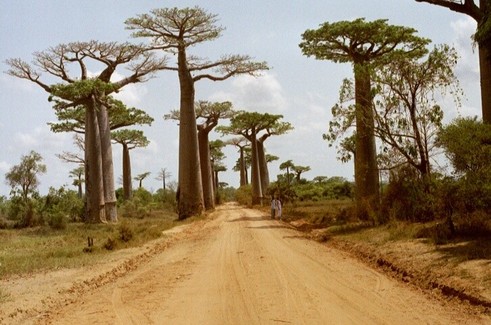Baobabs are pretty fascinating trees. Like cork trees, their bark regenerates when stripped away.It contains fibres which can be woven into fabric, baskets, rope, and nets. It also has a few uses in traditional medicine.
The fruit are roughly coconut sized. Their shells and fibres are traditionally burned, and the ash used in soap making. As well as the edible flesh, the seeds can be roasted and ground like coffee beans, or fermented and ground into a sauce. They can also be pressed for oil, which can be used for either culinary or cosmetic purposes.
The baobab leaves are edible too.
There are 9 species of baobab in the world. 8 are native to Africa (6 of them from Madagascar), with 1 native to Australia.
Some cultures call it the "Tree of Life", and they sometimes represent ancestors due to their huge lifespans – baobabs can easily live for over 2 millennia.
The sad thing is, baobabs are under threat. Like many of the world's most ancient trees, numerous baobabs have suddenly died over the past decade. The most likely cause is climate change.
The demise of the largest and oldest African baobabs
Patrut et al (2018), Nature
https://repository.up.ac.za/bitstream/handle/2263/65292/Patrut_Demise_2018.pdf
(open access)




